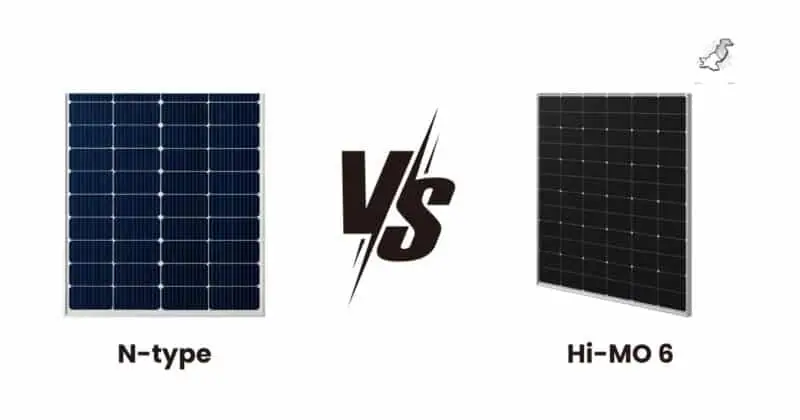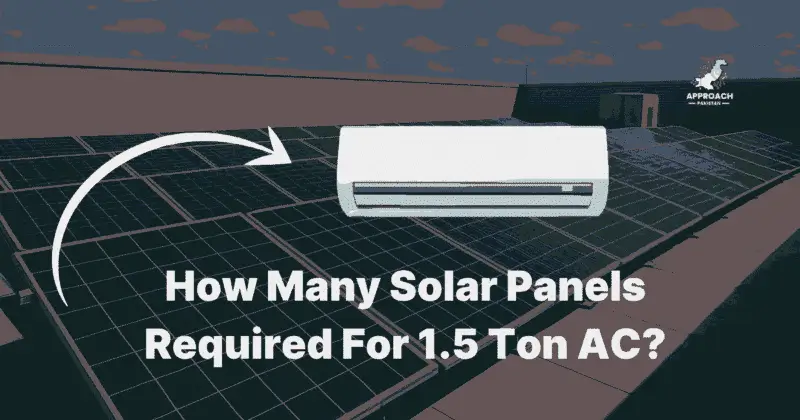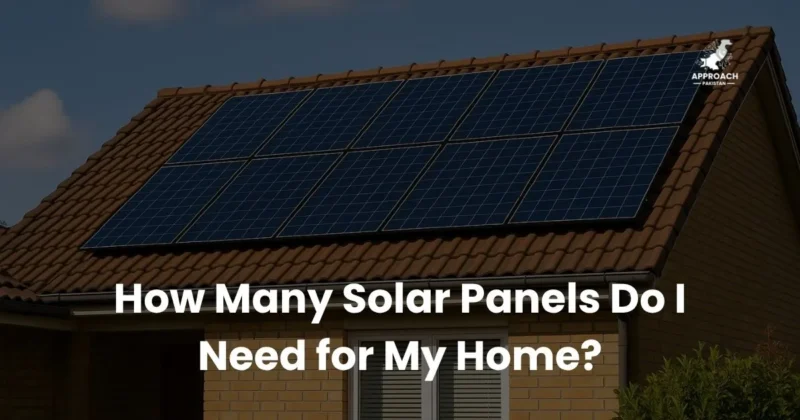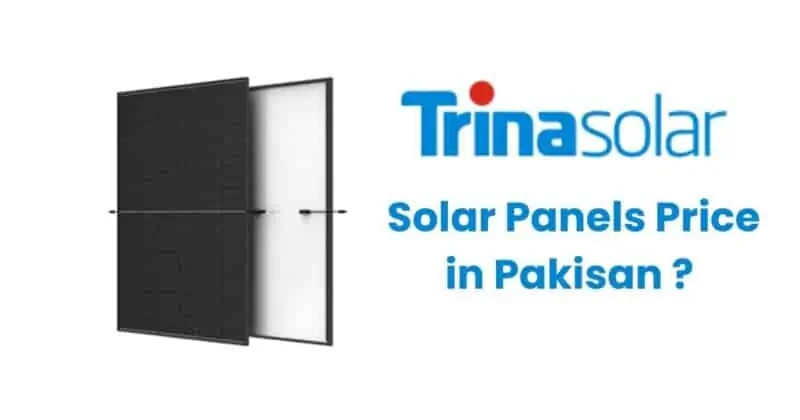N-Type vs P-Type Solar Panels: Whats the Difference?
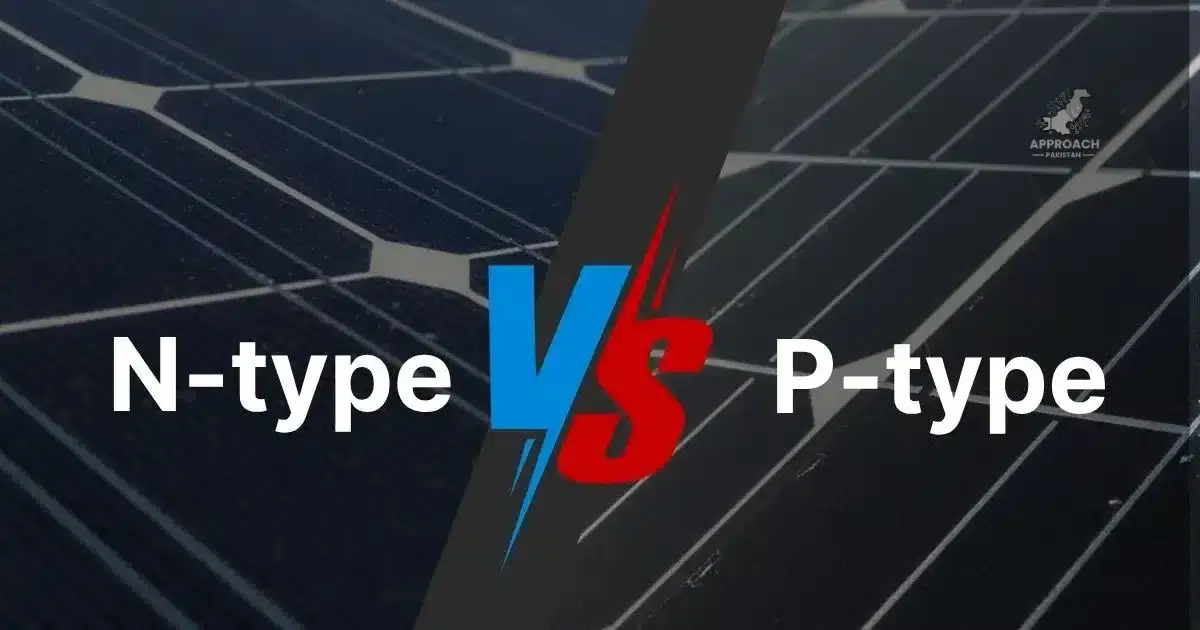
When homeowners explore solar energy systems to cut energy bills and achieve a self-sustainable home, they encounter two different types of solar panels: N-type and P-type. The key difference lies in their inner layers—specifically, how semiconductor materials are doped with elements like phosphorus (for N-type solar cells) or boron (for P-type solar cells). This intentionally contaminated design alters their electrical properties, affecting performance, lifespan, and efficiency.
From my experience, most customers focus on power output, aesthetics, and budget when acquiring solar panels, but few dig into the structure of the PV module. Yet, this difference matters—N-type panels (with excess free electrons) typically last longer, while P-type panels (relying on holes from fewer valence electrons) are cost-effective. Technologies like PERC (Passivated Emitter and Rear Contact) or IBC (Interdigitated Back Contact) further refine their advantages, but the PN junction—where N-type and P-type layers interact—is what truly enables electricity generation.
Understanding Solar Panel Fundamentals
Even the most dedicated photovoltaic enthusiast might not realize how structural differences between P-type and N-type solar panels affect performance. Through years of examining solar cells, I’ve learned their core materials and internal structure make all the difference. While both types convert sunlight into electricity, their atomic-level designs explain why professionals choose one over the other for specific installations.
Here’s what I’ve learned from years working with photovoltaic technology: When solar panels absorb solar radiation, photons strike the N-type semiconductor layer in each cell, knocking electrons loose from the absorber layer to create electron-hole pairs. These excited electrons flow to the negative terminal, through your closed circuit (powering your load as electric current), before returning via the positive terminal to recombine with their hole. This constant process – the photovoltaic effect – is how all solar cells convert sunlight into usable power, whether in small rooftop systems or large solar farms.
Solar Cell Architecture: The Foundation of PV Technology
At the heart of every solar cell lies its structure – a clever arrangement of materials that determines how efficiently it can generate energy. Having worked with both P-type and N-type solar cells, I’ve seen firsthand how their construction varies. The magic happens at the P-N Junction, where p-type crystalline silicon wafers (with their positively charged nature) meet n-type crystalline silicon wafers (which are negatively charged).
What fascinates me most is how these wafers of crystalline silicon (or c-Si) are arranged – with one type forming the bulk region and the other creating the thinner emitter region, together creating that crucial internal electric field. While Traditional cells use an Aluminum Back Surface Field (Al-BSF), today’s market offers newer technologies like PERC, IBC, and bifacial technology that build upon this traditional technology. The specific technology used in manufacture really makes all the differences in performance – something I wish more installers would explain to customers when comparing P-type solar cells versus N-type solar cells.
The Science Behind P-Type and N-Type Solar Panels
P-Type Solar Cells: The Industry Standard
The fundamental structure of P-type solar panels features a boron-doped crystalline silicon (c-Si) base layer that carries a negative charge, while phosphorus doping creates a positively charged emitter layer on top. Currently dominating the solar market, P-type panels outperform their N-type counterparts in popularity for several key reasons. Their superior radiation resistance has made them the preferred choice for space applications, while their longer research history has led to more refined technology. This established manufacturing base translates to greater affordability for residential installations. Leading manufacturers like Chint Global have capitalized on these advantages, offering popular P-type models such as their AstroSemi and AstroTwins series.
N-Type Solar Cells: The Next Generation
N-type solar panels feature a phosphorus-doped c-Si wafer that creates a negatively charged base layer, with a boron-doped emitter layer on top. Unlike P-type panels, they avoid light-induced degradation entirely, making them suitable for all construction types while offering extended lifespan. However, this superior performance comes at a higher cost compared to traditional P-type solar panel options.
N-Type vs P-Type: Technical Performance Comparison
While P-type and N-type solar panels may appear identical to the untrained eye, their internal engineering creates distinct performance characteristics. The fundamental distinction lies in their semiconductor doping – P-type uses boron-doped silicon while N-type employs phosphorus-doped silicon. This atomic-level difference significantly impacts electron behavior, influencing everything from initial efficiency to long-term degradation rates. P-type panels have historically dominated the residential market, but N-type technology is rapidly gaining ground due to superior real-world performance.
Performance Metrics Table
| Feature | N-Type Panels | P-Type Panels |
| Peak Efficiency | 25.7% | 23.6% |
| Light-Induced Degradation | None | Up to 10% loss |
| Product Warranty | 20 years | 12 years |
| Power Output Warranty | 30 years | 25 years |
| Manufacturing Cost | 15-20% higher | Industry standard |
Pros and Cons of N-Type and P-Type Pane
N-Type Panel Benefits
- No light-induced degradation issues
- Extended lifespan compared to p-type
- Superior conversion efficiency
N-Type Panel Drawbacks
- Higher Cost
- Limited availability in the market
P-Type Panel Benefits
- More affordable pricing
- Easier to source (widely available)
- Strong radiation resistance
N-Type Panel Drawbacks
- Prone to light-induced degradation
- Shorter operational lifespan than n-type
This comparison highlights critical factors for your solar energy decision-making.
Historical Context & Market Trends
How P-Type Became the Industry Standard
P-type panels became the industry workhorse through space-age innovation. Originally developed for 1950s satellite programs, their radiation resistance proved ideal for the harsh space environment. When adapted for terrestrial use, manufacturers maintained P-type production due to:
- Established manufacturing infrastructure
- Lower material costs
- Proven reliability
However, the boron-oxygen defects in P-type panels cause up to 10% initial power loss – a flaw completely absent in N-type technology.
The Rise of N-Type Solar Technology
The solar industry is buzzing about N-type solar panels, and for good reason. Having worked with photovoltaic systems for years, I’ve watched their conversion efficiency climb dramatically – from 25.4% (Jinko Solar, 2021) to 25.7% (Jinko again, 2022), with Trina Solar hitting 25.5% in between. These aren’t just numbers; they represent real power gains for homeowners.
Currently holding 5-10% market share (2021), N-type technology is projected to dominate 70% of the solar panel market by 2032, leaving P-type modules at 30%. This shift comes down to physics: when photons hit the absorber layer, they create electron-hole pairs that flow through a closed circuit from negative terminal to positive terminal, generating cleaner solar power with less energy loss.
N-Type vs P-Type: Which Should You Choose?
When planning your solar energy system, the choice between N-type and P-type panels comes down to three key factors: your budget, energy needs, and available space. In my years installing systems, I’ve found N-style panels deliver higher efficiency levels – perfect when you have limited space but high energy needs. However, they come with a steeper upfront cost.
On the flip side, P-style panels are more affordable for the average homeowner, making them ideal if you have larger space for installation and want to save on initial cost. Remember, every component matters in your solar panel setup – the right type should balance performance with what you can install within your means.
Final Thoughts on N-Type vs. P-Type Panels
Whether you choose N-type or P-type solar panels, understanding their internal structure, performance metrics, and long-term implications will help you make a more informed and cost-effective investment in your solar energy journey. Consult with your installer, evaluate your energy goals, and use this knowledge to power your decision.

